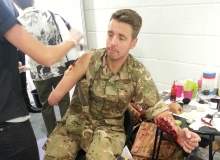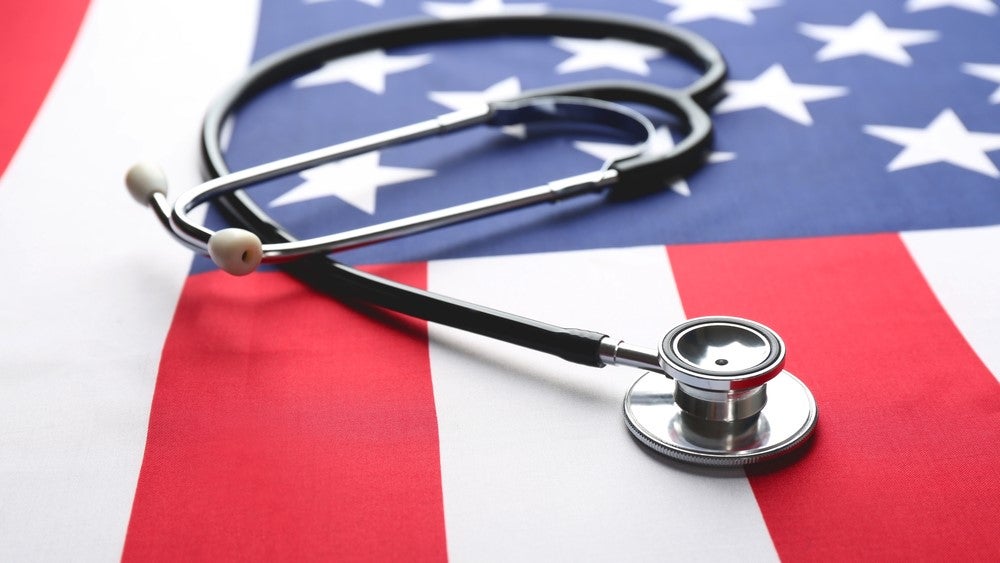
More than 240 British Armed Forces personnel have been given amputations since the UK’s participation in the war in Afghanistan began in earnest in 2007.
This shocking figure reflects the ongoing reliance of insurgents on roadside bombs and that no new detection, disarming and armouring technology can provide 100% protection from their effects.
But more positively, it also demonstrates that frontline medics have the groundbreaking tools, techniques and training to ensure more soldiers than ever can survive, following even the gravest injuries.
How well do you really know your competitors?
Access the most comprehensive Company Profiles on the market, powered by GlobalData. Save hours of research. Gain competitive edge.

Thank you!
Your download email will arrive shortly
Not ready to buy yet? Download a free sample
We are confident about the unique quality of our Company Profiles. However, we want you to make the most beneficial decision for your business, so we offer a free sample that you can download by submitting the below form
By GlobalDataThree companies that participated in the new Medical and Disaster Relief Zone at this year’s Defence and Security Equipment International (DSEI) expo in London tackle this requirement from three different stages of the process: training, diagnosis and treatment.
See Also:
Amputees In Action: preparing personnel for worst case scenarios
Amputees In Action’s actors, prosthetic makers and make-up artists work with the military to prepare soldiers for the often horrific outcomes of battle.
Company director John Pickup explains: "The company was founded in 2004 as a directory of amputee actors for the film and TV industry so that directors and producers could tap into a resource and find amputee actors."
The idea came to Pickup after he competed as a swimmer in the 1996 Paralympics in 1996 and was recruited with other young, fit amputees to depict injured soldiers in the Spielberg film Saving Private Ryan. This led to work providing realistic wound make-up and medical training scenarios for the military.
"Traditional training methods were given realism [for] the medics and soldiers to desensitise them to what they could possibly face," says Pickup. "We’ve always said that what they’re going to face with us is probably the worst case scenario they could come across and as close as [to] the real thing before they have to face the real thing."
Amputees In Action’s military training work has to date been focussed on Afghanistan-based scenarios, based around forward operating bases and patrols.
"They’ll bring us in to re-enact a local national or soldier injured in theatre, where the medics will have to treat us, do lifesaving intervention and check the caseveac [casualty evacuation] chain to get us out of that dangerous position," explains Pickup.
Injuries the company’s amputee actors have portrayed include IED blasts, gunshot wounds and burns, which could result in people losing one or more of their limbs or a facial feature. The makeup artists can add chest and head wounds, depending on what the client requires.
"We’re obviously a very important part of the infrastructure of the military, and the medical response and trauma response is a very focal point," Pickup concludes.
Philips: getting the inside picture
While Amputees In Action helps portray visible wounds, when injuries are internal accurately diagnosing and pinpointing them in the field can be almost impossible, necessitating a lengthy and potentially dangerous medevac procedure to a fully-equipped medical procedure.
Healthcare technology specialist Philips has partnered with Marshall Land Systems, part of Marshall Aerospace and Defence Group (MADG), to produce a containerised fully-functional CT scanner, which brings the diagnosis to the injured individual, rather than vice versa. The solution incorporates the Philips Brilliance CT64 scanner into a standard-sized container, below the maximum military transport weight of 20 tonnes, and is fully ruggedised to withstand transport by land, sea and air over even the roughest terrain.
At its destination, the compact facility cleverly folds out reverse origami-style into a fully-equipped scanning theatre. It can be set up by two people in less than two hours, after which it can provide a full body scan in just ten seconds. It has undergone a testing programme that included on and off-road mobility trials, rain and dust penetration tests and exposure to climatic conditions ranging from -32°C to +55°C.
The mobile CT scanner is in service with the militaries of the UK, Norway and France. The British model is used at the Ministry of Defence (MoD) training facility at Strensall in Yorkshire, ready to be deployed by air from RAF Brize Norton.
Derek Tarrant, Philips’ business Manager, CT, says: "Our solution offers the same capability [to] the A&E department of a major hospital, imaging the vascular system, bone, tissue trauma, heart and brain. We’re working on making the components even more miniature, lightweight and airworthy."
The scanner can be installed on a container ship to sail for humanitarian missions in disaster zones. Philips has installed a different model, the Ingenuity CT64, into the Royal Fleet Auxiliary’s (RFA) former container ship Argus, which can be anchored off a combat zone to act as a Primary Casualty Receiving Facility (PCRF).
Prometheus Medical: offering ambulance wound care to military medics
While training for medical emergencies and rapid, accurate injury assessment helps improve the outlook for severely injured soldiers, it is rapid mitigation of serious wounds after infliction that saves lives. To this end, soldiers carry their own morphine and a one-handed tourniquet so they can stem their own bleeding, even in the event of a triple amputation.
Increasingly advanced solutions are now being made available to military personnel. Prometheus Medical designs and develops emergency medical equipment used by ambulance personnel and is now making them available to army medics.
As well as featuring on front line ambulances in the UK, including the London Ambulance Service, the company’s Russell Chest Seal is the chest seal of choice for the British Ministry of Defence (MoD) for treating pneumothorax. This condition, where air gathers between the lungs and the chest wall, preventing the lungs from inflating fully, can result from a bullet wound.
"The special hydrogel adhesive enables it to be secured over wet, bloody and hairy skin to create a highly effective seal to allow the one-way valve to function," says a Prometheus Medical spokesperson.
To stem bleeding, Prometheus holds the license to distribute HemCon’s ChitoGauze XR Pro, a dressing impregnated with chitosan, a haemostatic chemical which stems the flow of blood.
It builds on the established HemCon ChitoGauze to include a radio-opaque X-ray strip, meaning if it is left in the wound following surgery it can be easily found using X-ray. It can conform to the shape of the wound and is Z-folded for compact storage and easier application.
Pelvic injuries are common in soldiers suffering from IED blasts, and Prometheus Medical is hoping to add to the army medic’s kit with its single-use pelvic splint.
"In the modern climate of increased infection control, clinicians are moving away from reusable items, especially those associated with trauma, and moving towards cost-effective single-use products such as our Prometheus Pelvic Splint," says a company spokesperson.
"Due to its single-use design the device is able to be cut to fit the size of the patient, allowing for much improved access to the front of the patient such as the abdomen, groin and femoral artery."
Improving outlook
By the very nature of the dangerous job they do, soldiers regularly put themselves in the line of fire and can be subject to the most severe traumatic injuries. While armour has improved to minimise the chance of injury, when the worst does happen the latest training, diagnosis and treatment techniques can significantly improve the immediate and long-term outlook for the injured soldier.
Follow Berenice Baker on Google+
Related content
Protection racket – keeping the military body armour business booming
However tight budgets are, defence departments are always willing to invest in body armour and helmets, and the US military is the world’s biggest market for protective gear.
Fighting fatigue: cognitive science is transforming soldier attention spans
The 24/7 nature of modern operations puts unprecedented demand on the vigilance and alertness of today’s service personnel – and highlights the damage that fatigue can do to morale, performance and even survival, especially during sustained round-the-clock missions.


.gif)




